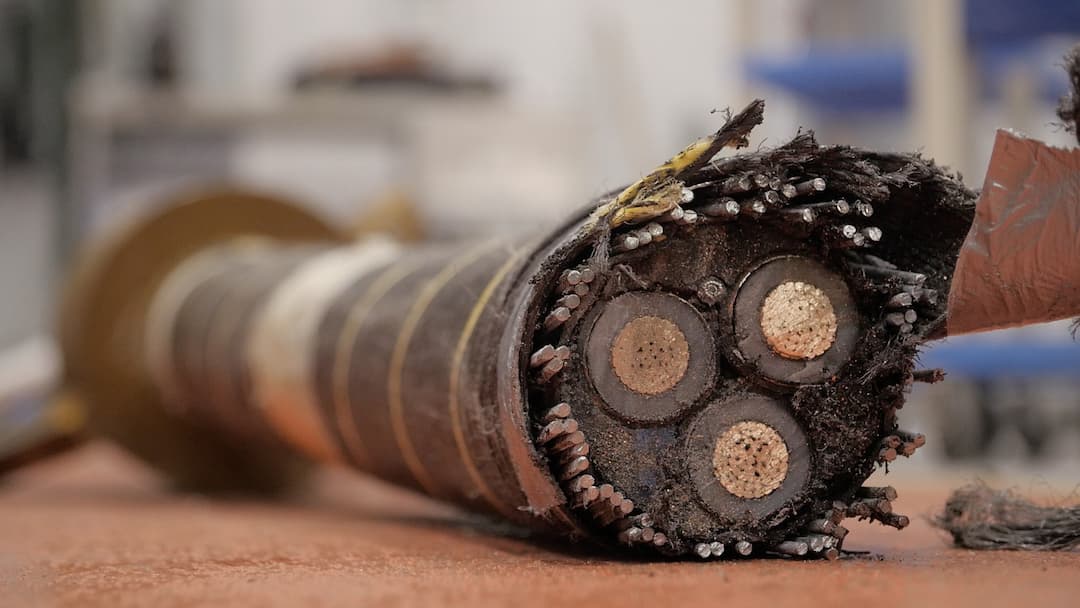Predicting failure of dynamic offshore cables by insulation breakdown due to water treeing
The benefits of offshore wind can only be realised with a safe and secure connection of these wind farms using reliable dynamic subsea cables. This presents an opportunity for growth in UK cable manufacturers, as well as international suppliers.
Currently, 80-90% of offshore wind farm projects experience a cable related fault, costing the industry 100’s of millions in cable repairs and lost revenue from the farms turbines.
As activity within the offshore wind industry accelerates, and new applications in floating wind the number of cable failures is expected to increase, the issue of dynamic subsea cable failure needs to be addressed.
The Solution
This research project focused on modelling the behaviour of a dynamic cable installed to a floating offshore wind turbine’s platform and predicting its fatigue lifetime due to latent defects within the cable’s insulation.
The outcome of this work resulted in a model which can predict a dynamic cable’s failure due to water treeing within the dielectric layers. This prediction of when a dynamic cable becomes high risk of failure allows for planned maintenance activities and thus the associated cost savings can be made.
The average cable repair is estimated to cost £12.5 million and takes three to five months to repair. If this failure can be predicted and maintenance planned for, this cost is approximately halved.
This model was created as a result of the development of an electromechanical degradation model of a dynamic cable’s insulation has been developed, which accounted for the mechanical dynamics of the cable being installed in a floating wind configuration and the electrical stresses from being energised to 66kV.
As part of this EngD project, ORE Catapult supported the development of the of the research engineer to solve the research problem.
